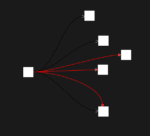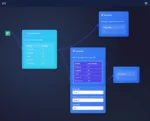
by tyler garrett | May 27, 2025 | Data Management
In an era where data-driven decisions power innovative business strategies and insights, protecting sensitive information becomes mission-critical. Modern enterprises collect and handle vast quantities of data that range from openly accessible public information to highly confidential organizational records. Traditional manual methods for identifying and managing sensitive data are increasingly insufficient, error-prone, and labor-intensive. Leveraging machine learning (ML) to automate the classification of data sensitivity presents an innovative, scalable approach to safeguarding vital information assets. By systematically recognizing and categorizing data according to its sensitivity level, organizations not only enhance their security posture but further unlock possibilities for more efficient compliance, deeper analytical insights, and proactive operational decisions. So, how can business leaders fully harness the potential of ML-driven automated data classification to ensure robust data governance, risk mitigation, and strategic growth? Let’s explore.
The Business Imperative for Automated Data Sensitivity Classification
Data increasingly forms the core of business strategy and decision-making. Organizations rely heavily on insights derived from data to make strategic forecasts, manage resources effectively, and gain competitive advantages. As highlighted in our article on proactive inventory management using strategic forecasting, accurate, timely data utilization results in powerful competitive capabilities, but comes with substantial risks. Sensitive data within these systems—customer identities, financial records, proprietary insights—must be rigorously protected from both accidental exposure and intentional security breaches.
Compliance mandates like GDPR, CCPA, and HIPAA require rigorous oversight and control of data processing and storage. Each regulatory guideline has distinct criteria delineating sensitive information, adding layers of complexity to managing compliance manually. The potential repercussions of improper designation, mishandling, or breaches of sensitive data range far beyond mere financial penalties—business trust and reputation become heavily jeopardized.
By employing machine learning algorithms to classify data sensitivity automatically, businesses can fundamentally reduce human error and ensure higher compliance accuracy. ML-powered classification systems rapidly scan massive datasets to tag sensitive information according to pre-defined sensitivity levels, freeing human resources for critical strategic tasks. Decision-makers gain more clarity and confidence in security resource allocation and overall data governance strategies, aligning data security management with business continuity and innovation objectives.
Understanding Automated Data Classification Using Machine Learning
Automated data sensitivity classification uses advanced machine learning techniques to systematically analyze and categorize datasets. Specifically, supervised and unsupervised machine learning models allow organizations to train their data pipelines to recognize sensitive information paths. In supervised learning, predefined sensitivity labels train models to quickly process and accurately categorize incoming and existing datasets, while unsupervised learning models analyze unlabeled data to identify sensitive clusters through anomaly detection techniques or semantic patterns analysis.
Algorithms in automated classification solutions often utilize a blend of Natural Language Processing (NLP), pattern recognition, and neural network-based methods to detect personal information, finance documents, intellectual property, and healthcare records. NLP models dissect textual content and metadata—patterns, structures, and contexts—to assign levels of sensitivity dynamically. For structured data repositories, advanced regression and classification methods carefully validate and tag records automatically and efficiently.
One practical advantage of ML-driven data sensitivity classification is its intrinsic scalability and cost-efficiency. Organizations leveraging advanced data pipelines—such as those highlighted in our article on feature flag implementation for progressive data pipeline rollout—can efficiently integrate automated sensitivity classification directly into existing workflows, incrementally enhancing data security without disruption. The result? Robust, self-improving systems capable of handling rapidly growing internal and external data sources effortlessly.
Strategic Advantage: Real-Time Data Security and Analytics Integration
Integrating automated sensitivity classification into real-time analytical workflows increases the strategic value of your analytical capabilities. Companies already using advanced analytical and visualization techniques, including bundling techniques for reducing network visualization complexity and waffle charts for datasets representing part-to-whole relationships, stand to significantly benefit from seamless data security integrations. ML systems dynamically designate sensitive information, empowering analytics teams to manage security and privacy while performing deeper analytics with confidence.
Additionally, automated classification equips analytics platforms, such as Google BigQuery—discussed extensively in our popular post on the top reasons to data warehouse your social media data—with highly contextualized data. By integrating data sensitivity metadata with analytics platforms, administrators gain clearer visibility into which dashboards, visualizations, and reports access sensitive information. This integration further accelerates compliance reporting while reducing the overhead of manually assessing impact for each user action, logging, or audit request.
Ultimately, embedding automated data sensitivity classification into daily data operations transforms data governance into a proactive process—allowing organizations to be consistently responsive rather than reactively defensive. Aligning rapid analytics adoption with secure data handling frameworks ensures risk management strategies evolve dynamically in tandem with advanced business intelligence capabilities.
Operationalizing ML-Based Sensitivity Classification within Existing Data Pipelines
Implementing an automated data sensitivity classification solution demands strategic foresight and thoughtful integration into existing data engineering infrastructures. This is particularly true for businesses handling complex ETL processes. Experienced data leaders often leverage specialized expertise, similar to the support provided through our targeted advanced ETL consulting services, to design cohesive pipelines that incorporate ML sensitivity classification with minimal disruption and high efficiency.
ML-driven sensitivity classification pipelines involve robust API architectures and data observability frameworks integrated at multiple points—from data onboarding to final datasets intended for analytics platforms. Leveraging the approach outlined in our guide on driving real value through quick API consulting engagements, businesses can rapidly prototype, test, and deploy classification APIs, providing agile responsiveness to emerging compliance or sensitivity criteria changes.
Moreover, building comprehensive observability layers, as discussed in our exploration of holistic data monitoring systems through observability mesh, ensures continuous tracking, alerting, and remediation surrounding sensitive data flows. Integrating ML-driven sensitivity classification into a detailed monitoring environment lets data governance teams proactively detect and address potential security breaches or inadvertent mishandlings in real-time, ensuring maximum protection and transparency.
Future Outlook: Leveraging Causal Inference for Advanced Classification Refinement
Innovative businesses continuously explore future-looking strategies that push the boundaries of current classification techniques. One emerging paradigm is the application of causal inference—recently detailed in our discussion on causal inference frameworks for enhanced decision-making—to achieve deeper, more context-aware data classification capabilities. Employing causality-focused ML models, organizations gain understanding beyond correlational analysis, uncovering more nuanced and context-sensitive patterns affecting data sensitivity classification.
Leveraging causal inference further refines automated sensitivity models by enhancing congruity, predictive accuracy, and reducing false positives in identification processes. By incorporating causal inference techniques, businesses improve their understanding of underlying data contexts and relationships. This approach delivers precision in classification, significantly improving compliance outcomes and further reducing operational risks.
As more sophisticated machine learning and analytics innovations mature, such as continuously upgrading analytics infrastructure—described in-depth in our dedicated guide for upgrading and restoring Tableau Server —organizations investing now in automated data sensitivity classification will be primed to leverage tomorrow’s strategic advancements rapidly. Future-proofing data security posture today translates into greater agility, security alignment, and competitive advantage tomorrow.
Conclusion: Securing Your Data Ecosystem Through Strategic Automation
As data volumes and types grow exponentially, automated sensitivity classification using machine learning becomes indispensable for maintaining secure, compliant, and strategically actionable data ecosystems. Organizations empowered by data-driven, automated classification approaches quickly adapt to evolving regulatory landscapes, improve cost-efficiency, and strengthen decision-making frameworks.
Implementing ML-driven classification capabilities is not merely a security enhancement; it’s a proactive business strategy that equips enterprises with competitive resilience, innovation agility, and compliance accuracy well into the future.
Thank you for your support, follow DEV3LOPCOM, LLC on LinkedIn and YouTube.

by tyler garrett | May 27, 2025 | Data Management
In today’s hyper-connected digital landscape, data has become the lifeblood of organizations across all industries. With its sheer volume and complexity, managing data responsibly has never been more critical—or more challenging. Enterprises must now grapple with stringent regulatory compliance, privacy expectations of consumers, and internal policies demanding secure, verified data deletion. Yet, simply deleting data is no longer sufficient; verification and certification have become fundamental components in managing digital risks. A robust data deletion verification and certification process not only mitigates liabilities but also builds trust with customers and stakeholders. As experienced technical strategists, we understand that executives and decision-makers require clear, expert-guided insights into effectively managing this process—transforming compliance into competitive advantage. Below, we’ll explore the key elements, practices, and strategic advantages of mastering the art and science behind verified, certified data deletion.
The Importance of Data Deletion Certification for Modern Enterprises
In the face of expanding regulations and heightened customer awareness around privacy concerns, proving data deletion has evolved from a simple compliance task into a cornerstone of brand credibility and consumer trust. Organizations now face stringent regulations such as the GDPR and CCPA, emphasizing accountability, transparency, and verified compliance. Executing data deletion certification ensures your organization can confidently demonstrate legal and ethical adherence, safeguarding it against costly fines, penalties, and—worse yet—damage to your brand’s reputation.
Technology leaders know it’s insufficient simply to delete data upon request. Instead, they must employ verifiable processes that satisfy regulatory audits and legal inquiries quickly and conclusively. Businesses leveraging robust verified deletion processes reduce risks associated with data privacy and mitigate vulnerabilities from unauthorized access. Therefore, decision-makers focused on compliance strategy must invest heavily in processes backed by sound, evidence-based methodologies.
However, many organizations encounter pitfalls because their data architecture was not initially designed with deletion in mind. Handling complex deletion requests across various distributed systems and data pipelines requires foresight and strategic alignment. Moreover, a robust approach toward data deletion verification ensures meaningful analytics workflows, allowing teams to efficiently process streams of information while swiftly demonstrating compliance when required.
Understanding Data Deletion Verification Techniques
Data deletion verification is the process through which organizations provide demonstrable evidence that data was completely and irreversibly removed. Unlike mere deletion from user visibility, genuine verification implies assurance of data non-recoverability across all organizational systems. Verification techniques often rely on cryptographic hashing, timestamping, integrity checks, digital signatures, system logs, or leveraging auditable technologies like blockchain to preserve proof-of-deletion evidence transparently.
One powerful technique for verifying deletion is the implementation and recording of deletion events through distributed systems. For example, a modern approach using a distributed snapshot algorithm can help accurately capture states across pipelines, ensuring continuous compliance monitoring across your infrastructure. Organizations typically integrate these algorithms seamlessly within their data processing pipelines, providing real-time insights into states of deletion at any given moment, thereby eliminating ambiguity during audits.
A proactive verification process should integrate neat interfaces and audit dashboards, enabling stakeholders to visualize deletion states clearly. Techniques such as robust logging or event-sourced systems effectively facilitate tracing data lifecycle events transparently. Additionally, considering advanced verification mechanisms like cryptographic destruction certificates proves instrumental in offering indisputable artifacts of compliance. Forward-thinking companies include data deletion verification as part of their comprehensive compliance management strategy alongside initiatives around advanced analytics consulting, demonstrating organizational maturity and effective governance practices.
Key Steps in Building a Certified Data Deletion Strategy
Inventory and Identification of Data Assets
Comprehensive asset inventory stands as the first step—you cannot delete or certify verification if you haven’t precisely mapped data locations and flows. Amid growing complexity, organizations leverage advanced analytics and machine learning pipeline design to automatically map massive troves of data across diverse environments, empowering leadership with faster, reliable visibility into data’s lifecycle. Knowing exactly what data resides where facilitates highly effective deletion strategies and reduces organizational risk.
Implementing an Auditable Data Deletion Procedure
Establishing a standardized deletion procedure, supported by auditable technology solutions, helps organizations systematically process and log deletion requests. Employing technologies such as strongly-typed data pipelines (type-safe data pipelines) can substantially reduce errors and inconsistencies during deletion operations. These solutions ensure scalable deletion processes across heterogeneous data sources, providing trusted audit trails that demonstrate and certify proper data removal.
Continuous Monitoring and Reporting
To satisfy ever-evolving requirements, organizations must put in place robust compliance monitoring and reporting systems. Leveraging visual analytical tools—such as insightful Ridgeline plots for data distribution analysis—leaders stay informed about deletion states across varied categories and data sets. Timely reporting proves essential not only for managing complex data scenarios but also establishes a cohesive accountability system throughout data management operations, reassuring regulators and stakeholders alike.
Common Challenges and How to Overcome Them
Organizations commonly face considerable challenges when implementing robust data deletion verification and certification strategies. Primary among these is the initial data structure not being architected to support deletion activities, making it difficult to provide comprehensive evidence or assurance. Properly anticipating scale and compliance-related changes is crucial, and companies can benefit significantly from insights found in strategic tech articles such as architecting data environments for scalable deletion.
Another commonly encountered obstacle revolves around the complexity of distributed systems and their corresponding datasets. For instance, inadequate or inconsistent implementation of technologies like the distributed snapshot algorithm makes verification cumbersome, slow, or impossible. Leaders must ensure clarity on their chosen technology stack, verification mechanisms, and audit-trail visibility.
Finally, there’s the challenge around cultural inertia—resistance to change within an organization slowing progression towards rigorous standardization processes required for robust verification and certification. Organizations can counter this friction by providing exemplary training, raising awareness about the ethical implications of non-compliance, and foregrounding their successful track records in responsible use of data analytics.
Linking Ethical Data Practices to Verified Deletion Policies
The act of verifying data deletion doesn’t exist in isolation—it’s closely intertwined with an organization’s broader ethical responsibilities. Companies proactively integrating verified deletion policies into their ethical frameworks recognize that effectively protecting consumer privacy is now a foundational measure of responsible data use. More on addressing ethical considerations around data analytics can be explored in our trusted resource, ethical considerations of data analytics.
Certified deletion allows organizations to more meaningfully address consumer and stakeholder expectations regarding data transparency, user autonomy, and privacy rights. Ethical practices thus inform the creation of effectively auditable deletion policies, aligning organizational strategies with societal values and consumer expectations. Such transparency not only secures regulatory approval but ultimately amplifies consumer trust and brand differentiation in a hyper-competitive market landscape.
Conclusion: Positioning Your Enterprise for Success Through Robust Data Deletion Practices
In an era demanding rigorous accountability and heightened sensitivity to privacy concerns, the practice of verified and certified data deletion gives strategic enterprises a distinct competitive edge. Investing in this robust approach positions your organization proactively—escalating trust, transparency, and compliance efficiency. Decision-makers who responsibly tackle data deletion pave the way for future-proof data governance frameworks, setting new standards in privacy and accountability. Let our expertise guide you through this transformative journey and turn your data deletion certification challenges into business opportunities.
Tags: Data Deletion Verification, Data Compliance Strategies, Certified Data Deletion, Data Privacy Assurance, Data Governance, Data Ethics
Thank you for your support, follow DEV3LOPCOM, LLC on LinkedIn and YouTube.

by tyler garrett | May 27, 2025 | Data Management
In our rapidly digitizing economy, organizations regularly move data beyond geographical borders to fuel global collaboration and innovation. However, cross-border data transfers introduce critical technical and compliance risks that must be effectively managed. Regulatory landscapes such as GDPR, CCPA, and emerging cross-border data transfer guidelines necessitate rigorous compliance, technical foresight, and innovative solutions. As strategic leaders in the data analytics consulting space, our experience has shown that effective cross-border technical controls are indispensable. Implementing stringent technical controls not only ensures compliance but also fortifies your organization’s data foundation for agile, global-scale innovation. Let’s unpack how robust technical controls empower seamless and secure cross-border data flows.
Understanding Cross-Border Data Transfer Technical Controls
The phrase “cross-border data transfer technical controls” refers to the practical, technology-driven measures organizations adopt to protect data integrity, security, and compliance as information crosses geographical boundaries. These controls generally cover encryption strategies, secure data pipelines, data validation approaches, and careful implementation of emerging technologies such as computational storage platforms. When properly executed, they help navigate complex international data compliance regulations while maintaining operational agility.
A well-architected data transfer control strategy starts from thorough compliance knowledge, reinforced by technology infrastructure capable of securely accommodating rapid data transfers while applying necessary audit trails and privacy assurances. Technical controls utilize encryption methods, secure communication channels, verification mechanisms, and comprehensive pipeline instrumentation to provide complete visibility and traceability. Furthermore, leveraging advancements in computational storage can minimize latency and bolster privacy by restricting sensitive data access to designated storage layers.
Understanding and effectively deploying these technical controls isn’t just good practice—it’s paramount for complying with international regulations like GDPR, ensuring privacy enforcement, and enabling real-time collaboration across multinational teams. This foundational knowledge enables organizations to balance compliance constraints with seamless operational workflows, propelling global innovation.
Encryption and Data Protection Strategies
Encryption remains one of the first lines of defense for cross-border data transfers. It mitigates risk by ensuring sensitive data remains inaccessible to unauthorized parties, significantly reducing the potential exposure in the event of a breach. While encryption can vary in complexity and implementation based on factors such as data sensitivity and compliance obligations, robust encryption should include transparent encryption-at-rest and efficient Transport Layer Security (TLS) protocols during data transmission.
Organizations increasingly turn to advanced encryption techniques integrated directly into existing data processing pipelines. By establishing schema registry integration for pipeline data validation, you enforce consistent data formats, simplify encrypted data handling, and streamline validation. Coupling encryption with data validation mechanisms ensures data arrives intact, uncompromised, and with an accurate, verifiable audit trail.
Moreover, data masking, tokenization, and anonymization are essential for compliance with privacy regulations. Ensuring technical safeguards like data anonymization is critical for globally regulated compliance environments, creating additional privacy protection layers to maintain responsibility and auditability across geographies.
Mastering Data Pipelines for Secure Transfers
Secure cross-border data transfers hinge significantly on robust pipeline architecture and meticulous monitoring strategies. Data pipeline best practices provide improvements in reliability, audition capability, and rapid issue resolution speed. By confidently managing and monitoring distributed pipelines, organizations exert precise control over cross-border data streams, further reducing operational risks.
An effective strategy involves establishing clear and intuitive data flow visibility to identify pipeline bottlenecks early. Leveraging established frameworks such as Google’s golden signals—latency, traffic, errors, and saturation—offers insights to proactively detect and remediate pipeline anomalies. Our technical advisory on golden signals for data pipelines explores these essential pipeline metrics in depth, outlining tactics for optimizing pipeline health.
Classic SQL functionality provides additional versatility. Tools like the SQL BETWEEN operator for range filtering enable precise control of fluid, real-time analytics, performance improvements, granular management capabilities, and reliable data segmentation. These targeted monitoring practices help you adhere strictly to data transfer compliance requirements while boosting pipeline efficiency.
Robust Data Recovery and Continuity Controls
Reliable data recovery and continuity controls are critical in cushioning your organization from unforeseen failures during cross-border transfers. Failures in the data process can severely damage business insights, violate compliance regulations, and lead to costly remedial efforts. Ensuring resilient recovery protocols protect your data pipeline has never been more necessary.
Many fail-safe mechanisms are available, including strategic checkpoint placements and the tactical execution of partial processing recovery methods. These allow your systems to efficiently and rapidly resume failed pipeline steps rather than restarting costly, large-scale writes or reads from scratch. Detailed logging, automatic failover implementations, and clearly defined recovery checkpoints ensure minimal loss of essential data.
Furthermore, investing in isomorphic architectures enables powerful recovery mechanisms. This strategy of sharing logic between server and client systems fosters seamless continuity of processes, bolstering transfer resilience and enhancing strategic data redundancy across geographic boundaries. Thoughtfully integrating these robust controls ensures interruptions to global operations are quickly addressed, minimized, or even, ideally, prevented entirely.
The Importance of Strong Data Modeling for Cross-Border Transfers
A robust data modeling strategy enhances clarity, scalability, and overall compliance effectiveness during cross-border operations. Thoughtful, precise data modeling directly impacts operational agility and cost savings associated with strategic international data controls.
The concept of data modeling as the blueprint of successful, scalable implementation strategies cannot be overstated. Comprehensive data models drive faster, smarter decision-making by documenting data usage, sensitivity, regional regulatory requirements, and alignment with compliance completeness. This structured approach also equips organizations with straightforward clarity in regulatory contexts, simplifying audits and demonstrating responsible stewardship of cross-border data.
Adopting comprehensive data models connects directly to efficient data visualization and advanced analytical outcomes. Fostering greater analytic maturity by embedding statistical context in data visualizations significantly elevates data-driven strategies across regions and complies with regional nuances in compliance scenarios. With careful design and strong domain expertise, your data modeling activities will empower better decision-making and cross-border transfer outcomes.
Leveraging Expert ETL Consultancy for Strategic Implementation
Expert ETL consultancy ensures practical implementation and strategic alignment of your cross-border data technical controls. Experienced consultants provide deep-domain knowledge to streamline data extraction, transformation, loading processes, and navigate complicated compliance frameworks successfully. Skilled ETL experts strengthen the entire international data transfer life cycle to capitalize on scalability, performance, availability, and security simultaneously.
Through professional advanced ETL consulting services, we help customers architect robust international data transfer pipelines from inception. Our teams craft solutions to maintain sophisticated pipelines, integrate encryption protections, data validation processes, and reliable recoverability. ETL professionals also augment the pipeline performance by recommending optimized workflows and compliance-focused integrations.
By seeking seasoned professional guidance, your business optimizes technical initiatives, mitigates internal risks, accelerates compliance success, and concretely boosts competitive global strategies. Engaging expert consultants for these intricate data initiatives translates quickly into measurable operational improvements, transparency, security rigor, and enhanced data-driven innovation.
Conclusion: Strategically Managing Cross-Border Data Technical Controls
Navigating the intricacies of cross-border data transfers requires targeted, practical strategies inclusive of encryption, proactive pipeline monitoring, resilient recoverability, strategic modeling capabilities, and professional ETL consultation. Implementing these controls isn’t simply regulatory compliance adherence; it’s a foundation for driving innovation and global competitiveness in a data-intensive world.
Strategic technical controls position your organization benignly within changing global regulatory frameworks. They strengthen innovation, safeguard insights, and empower organizational stakeholders to engage confidently in data-driven global growth opportunities.
Thank you for your support, follow DEV3LOPCOM, LLC on LinkedIn and YouTube.

by tyler garrett | May 27, 2025 | Data Management
In the fast-paced world of data-driven decision making, businesses that maximize their data value gain strategic advantages over competitors. Yet, effectively distributing and managing data across numerous stakeholders swiftly becomes a daunting challenge. Enter the Data Consumer Registration and Notification System—a robust, scalable method that empowers organizations to efficiently manage data requests, streamline data delivery, and send timely notifications to internal and external data consumers. This critical innovation ensures that analytics workflows remain accurate, commination channels remain clear, and every stakeholder stays informed in real-time. By mastering the complexities of data distribution through registration and notification best practices, your organization gains agility, enhances transparency, and unlocks deeper levels of trust from customers and partners alike.
The Importance of Establishing Structured Data Registration Processes
Today’s enterprises handle extensive data streams sourced from various platforms, applications, and external vendors. Successfully managing this data deluge demands a structured registration process for data consumers. Establishing clear registration protocols allows organizations to identify precisely who requires the data, understand the specific purpose behind each request, and ascertain precisely how that data will be leveraged across the business landscape. Without effective processes, organizations run the risk of compromising data integrity, security, and compliance practices.
A thoughtfully implemented registration system introduces numerous advantages, including ensuring transparency and documentation of data usage, managing compliance requirements, and supporting audit trails. Moreover, systematic consumer registration facilitates adaptive strategies, ensuring that each consumer’s analytical needs align with business capabilities. Businesses that have utilized advanced cloud-enabled services such as Azure consulting services often report enhanced capacity to manage and streamline their data governance processes, as they leverage cloud-native solutions to support data consumer management.
Moreover, with data-intensive processes evolving from static to dynamic use-cases, organizations increasingly shift from traditional ETL methods to ELT approaches. As highlighted in our comprehensive analysis on real use cases where ELT outperformed ETL, having a structured data consumer registration helps businesses adapt to modern data consumption patterns more swiftly—capturing detailed stakeholder requirements upfront and fueling successful platform migrations and analytics transformations.
Notification Systems: Enhancing Real-Time Data Communication
Modern organizations don’t just manage data—they manage dynamic, evolving data streams. Imagine scenarios where data providers issue significant updates, maintenance windows, outages, or critical changes in data schemas and definitions. Without robust notification mechanisms, such vital information can go unnoticed by data consumers, leading to compromised reporting accuracy, ineffective analytics, or disrupted downstream dependencies.
To achieve proactive risk management, organizations need automated notification systems integrated closely with their data management infrastructures. Such notification mechanisms act as a centralized communications medium that quickly disseminates alerts, ensuring data consumers are promptly informed of every crucial update or change. For instance, a robust notification system can integrate directly into data pipelines, databases, and streaming analytics architectures. This proactive communication approach significantly enhances efficiency—minimizing costly downtimes and improving data credibility across consumer groups.
Applying advanced techniques such as those discussed in our article on microservice telemetry aggregation patterns for real-time insights allows organizations to tap into sophisticated notification capabilities. Telemetry patterns support immediate event processing and real-time alerts, helping businesses quickly pinpoint aberrations in data processing and trigger notifications swiftly and precisely.
Implementing an Effective Data Consumer Registration & Notification Model
To implement a robust registration and notification system, organizations should first formulate clear business requirements to capture consumer needs, intended data usage scenarios, and required communication frequency and methods. Formalized registration processes can include intuitive portals, standardized online forms, or streamlined API-driven systems to facilitate ease-of-access for data consumers.
Sophisticated solutions effectively leverage automation, allowing data consumers to subscribe to selected topic-specific notifications or opt-in/opt-out on-demand. Such flexibility ensures greater control and data consumer satisfaction. Adaptive parallelism in data processing can also be incorporated, dynamically meeting changing demands for data delivery. Adaptive resource management models such as adaptive parallelism ensure efficient handling of burgeoning consumer requests, notifications, and delivery loads in real-time, especially during peak demand periods.
Additionally, notification systems should incorporate multi-channel alert features—such as instant messaging, emails, SMS notifications, or dedicated dashboards—to maximize reach. Machine learning capabilities, as outlined in our overview of real-world applications of Artificial Intelligence in business, can intelligently predict potential issues and send proactive alerts before actual disruptions occur, significantly enhancing stakeholder confidence and reducing operational risks.
Optimizing Data Processing and Distribution Efficiency
Behind every successful Data Consumer Registration and Notification System, efficient data processing and distribution capabilities play pivotal roles. To optimize the system and maximize its capabilities, organizations should focus on efficient data distribution methodologies. This is particularly important in a distributed processing environment, where optimizing shuffle tasks and inter-node data transfer can significantly improve system responsiveness. Our analysis on optimizing shuffle operations in distributed data processing provides key insights for stakeholders looking to drive responsive data delivery.
Furthermore, organizations should also conduct deep dives into their data infrastructure to evaluate data movement patterns carefully. Strategic database querying techniques, such as those detailed in our comprehensive guide to mastering the SQL WHERE clause, can significantly enhance performance by minimizing unnecessary data transfers or filtering data earlier in the pipeline.
Additionally, when large datasets frequently change or overlap, employing best practices like those explored in our article about jitter implementation for overlapping data point visualization creates a clear, intuitive visualization for end-consumers, significantly minimizing points of confusion or misinterpretation.
Ensuring Effective Visual Communication and Fraud Detection in Data Notifications
Presenting data insights effectively to end-users remains a crucial element in a Data Consumer Registration and Notification System. Equipping stakeholders with clear and intuitive visual analytics dashboards can significantly improve response times and decisions. Effective visualization strategies, drawing upon insights provided in our research of visual encoding effectiveness, will ensure that alerts and notifications attract immediate attention and enable faster interpretation of critical data updates.
Additionally, as organizations move from traditional spreadsheets toward streaming analytics for real-time business insights, fraud detection has evolved significantly. Effective notification systems can identify anomalies, triggering real-time alerts for potential fraud, compliance issues, or data processing errors. Incorporating sophisticated anomaly detection models into notification systems ensures data integrity remains alarmingly secure and reliable.
Ultimately, it’s important to continuously revisit, reassess, and fine-tune both the registration and notification processes, as data capabilities and consumer needs evolve over time. Staying agile with data strategy solidifies the system’s long-term success and supports a robust, data-driven organizational culture.
Conclusion: A Strategic Approach to Data Consumer Management and Notifications
In today’s business environment, implementing an effective Data Consumer Registration and Notification System is no longer optional—it’s strategically critical. Organizations that formalize these systems foster greater transparency, ensure timely and accurate information distribution, and significantly mitigate communication and data governance risks.
Leading enterprises that leverage strategic partnerships, such as Azure consulting services, empower their decision-makers, enabling comprehensive cloud solutions for dynamic data management. Leveraging proven best practices—including advanced analytics techniques, real-time telemetry aggregation, effective visualization, and smart anomaly detection—streamlines the organization’s entire data strategy, delivering unmatched efficiency and reliability, both today and in the future.
Seize a competitive advantage: invest in robust data consumer registration and notification systems built for reliability, clarity, and accuracy. Your data, your consumers, and your organization’s overall success depend on it.
Thank you for your support, follow DEV3LOPCOM, LLC on LinkedIn and YouTube.

by tyler garrett | May 27, 2025 | Data Management
In today’s rapidly evolving business environment, data integration emerges as the backbone of making informed and strategic decisions. External reference data, which includes anything from market trends, geographical codes, regulatory changes, to standardized industry frameworks, is becoming critical to obtain a 360-degree view of business landscapes. However, integrating external reference data seamlessly into existing architectures can pose significant challenges. Understanding and overcoming these challenges requires an advanced, strategic approach to technology and architecture design. From optimizing your ETL workflows to maximizing data-driven capabilities for better decision-making, knowing how to structure and automate the integration of external reference data can position your business ahead of competitors, unlocking true innovation potential. Let’s take a deeper dive into the key components, processes, and considerations around architecting your external reference data integration landscape.
Understanding the Importance of External Reference Data Integration
External reference data refers to information coming from outside sources, including data provided by third-party vendors, industry standards, geospatial databases, regulatory codes, and even economic indicators. This information enhances internal business datasets, providing broader context, accuracy, and validation capabilities. When effectively integrated, external reference data can significantly improve analytical outcomes, forecasting accuracy, regulatory compliance, and market positioning. However, the integration process can be complex, ranging from dealing with different data formats to handling automated data transformation and synchronization tasks.
Decision-makers must recognize the critical role that external data plays in a rapidly evolving landscape. Consider this scenario: your business is analyzing customer sentiment across geographies. By integrating external geospatial data or socio-economic indicators, the depth of insights obtained allows strategy teams to plan more efficiently and execute more precisely. To optimize the potential of external reference data, it’s paramount to select the right integration tools and robust architectures, and adopt proven practices such as advanced data transformation debugging techniques to ensure accuracy, consistency, and reliability.
Failing to effectively integrate external data puts organizations at risk of falling behind in predictive capabilities, market competitiveness, and compliance standards. On the flip side, businesses embracing robust integration approaches enjoy competitive advantages through deeper intelligence, leading-edge innovation, and significantly smarter decision-making.
Defining Core Principles of Integration Architecture
Defining explicit principles and standards is a foundational step when approaching external reference data integration architecture. Such principles help set consistent guidelines and expectations across the organization—streamlining processes and enhancing transparency. Essential architectural principles include modularity, interoperability, scalability, security, compliance, and automation. Mutual interoperability standards allow your data environment to easily integrate datasets and tools, aiding seamless interactions across different systems.
For instance, modularity helps organizations structure their external reference data ingestion in manageable, reusable blocks. A modular architecture reduces complexity while ensuring future integration efforts remain efficient and adaptable. Similarly, scalable infrastructure is mandate for handling growing external data influx. Using cloud architectures, particularly leading platforms like AWS, enables scalable storage and computing power ideal for complex data ingestion, transformation, and analytics.
Moreover, choosing the right storage solutions through informed decisions such as vector database selection or cloud storage lakes becomes critical. A well-articulated integration architecture eliminates technical bottlenecks and guarantees stronger alignment between business and IT objectives. Establishing clear security and compliance parameters ensures data integrity, privacy, and regulatory adherence, protecting sensitive external data against breaches and misuse.
Selecting the Appropriate Tools and Platforms
Selection of appropriate tools and technology platforms is crucial in achieving successful external reference data integration. A well-chosen technology stack will simplify data acquisition, improve ETL workflows, optimize database management, and enable robust analytics. Much of modern external reference data integration occurs in cloud-based environments, such as AWS, which provides powerful and scalable services ideal for managing large-scale data integration processes.
Working with professional consultants or experienced technology partners helps companies take advantage of advanced platforms, leveraging AWS consulting services to implement customized integration solutions efficiently. By using tools that support diverse data transformation tasks, ETL automation, and analytics workloads, organizations significantly reduce complexity, increase efficiency, and improve time-to-value.
Furthermore, selecting platforms that incorporate best-in-class visualization frameworks for interactive analytic exploration, such as those that support zoom-and-pan interactions, ensures stakeholders can easily understand and further interrogate integrated data. Always prioritize utilizing comprehensive monitoring and debugging tools integrated within your workflows, streamlining troubleshooting through advanced logging and monitoring systems.
Designing Robust ETL Workflows for External Data Integration
Extract-Transform-Load (ETL) workflows are essential to efficiently manage external reference data integration. Effective ETL processes ensure that data from diverse external sources is clean, well-structured, and suitable for seamless integration into internal databases. Many external datasets require complex data transformations, validations, and synchronization procedures. Incorporating effective long-running transaction management into ETL workflows helps mitigate failure scenarios and ensures data consistency across integration points.
ETL workflow optimization demands a comprehensive understanding of data transformation processes and requirements-driven validation techniques. Using strategically designed ETL tools reduces the risk of potentially costly data errors and delays. Understanding and appropriately debugging these workflows become increasingly critical. Leveraging methodologies and resources discussed in our insights around data transformation debugging techniques ensures ETL workflows are robust and error-free.
Moreover, agile workflows paired with the right integration strategies can quickly adapt to dynamic external data environments, providing flexibility in aligning the integration processes to regulatory updates, data schema evolutions, and emerging business requirements. Organizations benefit immensely by prioritizing modular, scalable ETL architectures hosted within cloud environments.
Avoiding Common Pitfalls and Misconceptions
External reference data integration, while immensely valuable, can introduce complexity that not every organization is ready to tackle. One common misconception is assuming all externally-derived datasets will immediately correlate neatly with internal records. This expectation frequently leads to technical hurdles, delayed analytics capabilities, and poor decision-making outcomes. Understand clearly that “data-driven” does not always equate to successful decisions—this crucial point is articulated comprehensively in our article “Why Data-Driven Doesn’t Always Mean Smart Decisions“.
Another common pitfall involves overlooking accessibility when presenting integrated data sets and visualizations. Ensuring compliance with visualization accessibility guidelines and implementation practices helps guarantee effective communication across diverse stakeholder groups, creating inclusive solutions that serve everyone better.
Finally, thinking broadly about integrating external datasets beyond typical structured formats allows companies to embrace a multifaceted landscape of information. Avoid limiting your integration strategy—consider semi-structured, unstructured, and alternative external data types like social media feeds, news articles, and proprietary intelligence services. This holistic approach strengthens organizations’ analytic capabilities and yields more robust insight.
Conclusion: A Strategic Approach for Future Innovation
Integrating external reference data into your organization’s technology ecosystem can dramatically enrich your analytic capabilities, business intelligence, and innovation-driven decision-making processes. By thoughtfully crafting your external reference data integration architecture—considering core principles, selecting optimal platforms, streamlining ETL workflows, avoiding misconceptions, and recognizing broader types of external data—you position your organization for sustained growth and competitive advantage.
Ultimately, external data integration is not an isolated, purely technical pursuit. It’s a strategic choice critical to maintaining your company’s momentum towards becoming more agile, comprehensive, and data-enabled within the increasingly complex landscapes of your business operations. Let robust architecture, guided best practices, advanced analytic integration, and proven consulting expertise guide your strategic pathway toward innovative, competitive, and successful future outcomes.
Thank you for your support, follow DEV3LOPCOM, LLC on LinkedIn and YouTube.

by tyler garrett | May 27, 2025 | Data Management
In today’s digital economy, data stands as a catalyst for innovation and competitive advantage. Enterprises grapple daily with exponential data growth, diverse data sources, and ensuring data integrity across organizational silos. Effective Master Data Management (MDM) strategies resolve these challenges by centralizing, standardizing, and harmonizing critical business data. As organizations scale, their systems become increasingly interconnected, the demand for robust integration patterns in an MDM framework becomes paramount. Understanding integration patterns isn’t merely a technical formality—it’s essential for maximizing data efficiency, enabling analytics-driven insights, and unleashing your organization’s full growth potential. At Dev3lop, our expertise in Power BI consulting services and comprehensive data analytics empowers organizations to navigate complex MDM landscapes effectively. Let’s explore the essential integration patterns to strategically implement your Master Data Management system.
Understanding Integration Patterns: The Foundation of MDM
Before delving into exact integration strategies, decision-makers must grasp the importance of integration patterns. Integration patterns serve as standardized approaches to connect disparate applications, databases, and data streams into a cohesive ecosystem. Organizations with sophisticated data environments require integration patterns to ensure data consistency, scalability, agility, and ease of governance. Patterns like data consolidation, data federation, service-oriented architecture (SOA), and event-driven architectures become the bedrock of a successful MDM implementation.
Choosing the right integration pattern depends largely on business requirements, complexity of data ecosystems, and long-term strategic goals. Effective pattern selection involves balancing real-time operational demands, batch analytics requirements, governance protocols, and efficient access to trustworthy data. At Dev3lop, we have extensive expertise in empowering our clients through strategic integration pattern selection, enabling them to unleash significant growth through data analytics. By laying a solid foundation of these patterns, enterprises can rapidly adapt to changing market circumstances, regulatory environments, and business priorities.
Data Consolidation Integration
Data consolidation, or centralization, refers to collecting data from dispersed systems into a singular repository or master database. As the cornerstone of interactive and analytical reporting, this integration pattern simplifies governance, vastly improving data quality and accessibility. With robust consolidation, businesses can ensure a single source of truth, reduce conflicting or redundant data, and easily perform comprehensive analytics to drive informed decisions.
Typically, data consolidation occurs through Extract, Transform, Load (ETL) processes, enabling organizations to cleanse data, standardize formats, and store data optimally. Well-executed consolidation affords organizations opportunities to swiftly identify trends and capitalize on opportunities highlighted by centralized advanced analytics. By leveraging skilled data visualization experts, businesses can further maximize the power of consolidated data to effectively communicate insights across all organizational levels.
Nevertheless, consolidation patterns must carefully consider infrastructure scalability and performance to handle data-intensive tasks, transactional versus analytical access needs, and compliance requirements. Engaging an experienced consultancy ensures your data pipeline remains high-performing and adaptable, supporting future growth initiatives without limitation.
Data Federation Approach
Unlike data consolidation, the data federation approach integrates access points rather than moving data physically. Federated integration consolidates virtual views of multiple decentralized systems or data stores while leaving underlying data decentralized. Organizations operating globally or composed of acquired companies with varying legacy systems frequently benefit from this model. Federation allows for agility, quicker implementation, and reduced initial costs, ideal when time-to-value is crucial.
Federation provides simplified access to diverse data, presenting a unified interface to decentralized repositories through advanced middleware solutions. This integration pattern performs exceptionally in dynamic environments, allowing businesses real-time analytical queries without extensive rebuilding or data duplication efforts. Yet, federation may pose latency and security complexity challenges within highly transactional scenarios.
To overcome federation’s inherent complexities and latencies, businesses should utilize techniques detailed in posts like Performance Tuning for Data Visualization Dashboards. Proper tuning ensures quick response times, enhancing the efficiency of federated approaches. Consulting with experienced integrators like Dev3lop ensures intelligent federation design, striking effective balances between agility, security customization, and performance.
Service-Oriented Architecture (SOA) Integration
A Service-Oriented Architecture (SOA) integration pattern leverages modularity and flexible APIs to achieve seamless system interconnectedness. As microservice applications continue to shape modern IT infrastructure, SOA integration excels in scenarios demanding flexibility, paired with a commitment to reusable, interoperable components. Enterprises adopting SOA drastically improve agility, enabling quicker response to changing business processes, integration of new systems, or adoption of newer technologies.
Implementing SOA integration within MDM frameworks empowers organizations with reusable services, facilitating smooth coordination, streamlined workflows, minimized maintenance overhead, and simplified data governance. Enterprises are increasingly pairing SOA patterns with advanced analytics techniques such as transductive transfer learning for data classification to derive additional value amid constrained labeled data scenarios.
However, navigating a transition to SOA requires diligent planning, robust enterprise architecture collaboration, flexible governance policies, and thorough impact analysis. Professionals experienced in automation-driven integration, as discussed in our article on Impact Analysis Automation for Data Pipeline Changes, help businesses adopt a more structured approach to system cohesion and data alignment under MDM systems.
Event-Driven Integration Pattern
Event-driven integration hinges on capturing and responding instantly to significant business occurrences or triggers. This pattern promotes information system agility, enabling high responsiveness and the capability to anticipate and mitigate risks proactively. Industry sectors such as supply chain, manufacturing, financial services, and fraud detection particularly benefit, with fast decision-making capabilities directly influencing measurable improvements and profitability.
This form of integration easily and effectively aligns with modern technologies like IoT and sophisticated analytics techniques, such as machine learning-driven fraud detection, swiftly identifying anomalous behaviors within massive datasets. Event-driven patterns substantially reduce latency, minimize operational bottlenecks and help quickly adapt business processes to market dynamics in near-time or real-time scenarios.
Nonetheless, event-driven integration demands exceptionally diligent design around resilience, synchronization, event-management governance, and accurate analytics. Partnering with a strategic consulting organization experienced in modern event-driven solutions ensures your MDM endeavors deliver seamless analytics opportunities and maintain stable infrastructure, regardless of complexity or business environment volatility.
Hybrid Integration Approaches and Visualization Synergies
Increasingly, enterprises adopt hybrid integration strategies blending consolidation, federation, SOA, and event-driven patterns. Hybrid integration effectively handles broad-scale enterprise use-cases demonstrating diverse transactional, analytical, real-time, and batch-processing requirements. Successful hybrid approaches leverage modern data visualization techniques, such as those discussed in Typography as a Data Visualization Encoding Channel, greatly enhancing communication of sophisticated data narratives.
These combined approaches optimize performance, scalability, flexibility, and agility. Critical considerations in hybrid integration strategies frequently encompass accessibility guidelines—see our insights on Visualization Accessibility Guidelines and Implementation, as well as technical visualization design advice such as Aspect Ratio Considerations in Chart Design. Embracing strategically hybridized integrations positions enterprises to move toward effective data-driven decision-making faster.
In summary, mastering these integration patterns, particularly via hybrid integration strategies, requires expert consultation that combines years of real-world experiences and passionate professionals in data and analytics strategy.
To confidently harness your data’s full potential through Master Data Management, it’s crucial to implement the proper integration patterns. Engaging with a seasoned consultancy will guide your endeavors flawlessly, creating seamless compatibility and superior analytics outcomes.
Thank you for your support, follow DEV3LOPCOM, LLC on LinkedIn and YouTube.






























